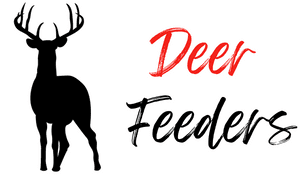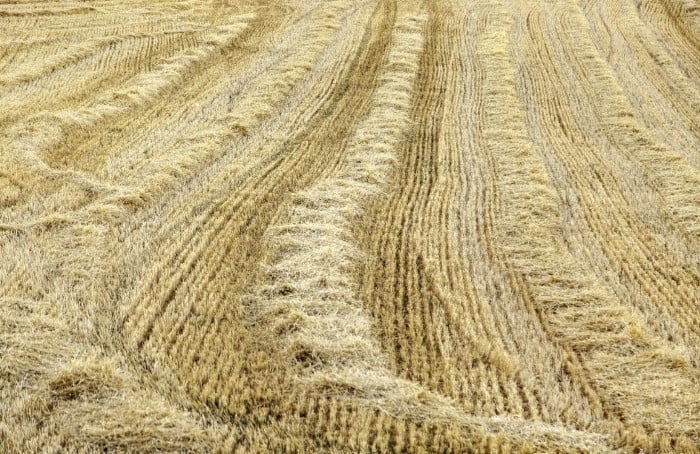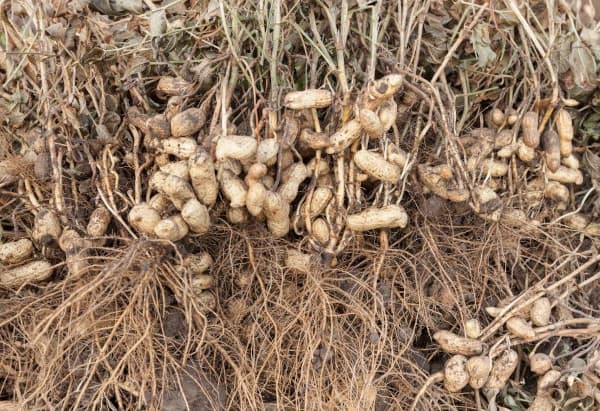Deer season strategy requires careful consideration of food plot selection to ensure optimal success. The choice of food sources for destination plots is essential, taking into account various factors such as food sources available, cover and stand access, equipment and budget, location, and deer activity patterns throughout the year.
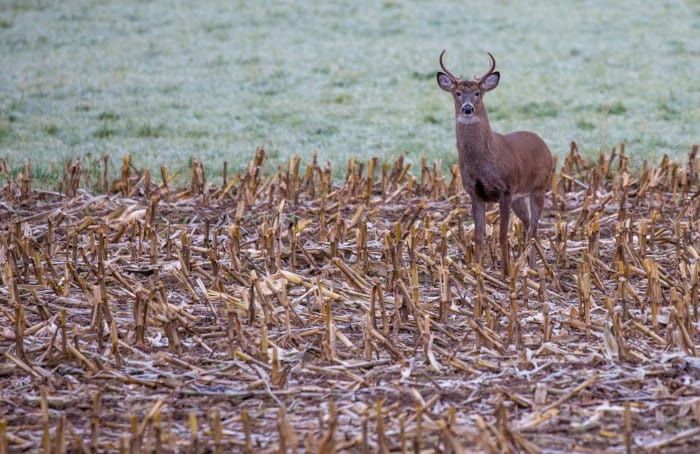
One commonly debated topic among deer hunters and land managers is this question: Do deer like soybeans or corn better?
In this post, I’m going to dive deeper into the corn versus soybean debate and look at the pros and cons of each food plot crop.
Key Takeaways
– Neighboring food availability, cover, and stand access are important factors to consider for deer season strategy.
– Corn provides cover and security in late fall and winter but is costly and serves as a food source only during the late season.
– Soybeans are preferred in summer, can attract deer for 10 months but require larger plots, specific nutrient requirements, and inoculation.
– Mixing soybean and corn plots is not recommended.
Soybeans vs Corn – Which is the Better Food Plot Crop
When considering deer food plot options, it is important to evaluate the advantages and disadvantages of planting corn and soybeans based on their protein levels, attractiveness during different seasons, plot size requirements, and cost-effectiveness.
Corn Food Plot
Corn is, without a doubt, one of the most popular deer plot crops on the market. In addition to being a quality food source that deer love, standing corn also provides cover and a potential bedding area. Corn is traditionally planted, so it’s available as a food source in late fall and winter.
Corn is not as picky as soybeans in terms of soil quality as corn can grow is lower quality soil. This makes corn easier to grow compared to suybeans.
However, corn only provides around 7-10% protein for whitetails, and is an expensive crop compared to some other popular food plot seeds.
In addition, there are some potential deer health concerns associated with corn in the form of serious digestive issues, and acidosis, which can be fatal. These concerns are generally tied to the overconsumption of corn over a short period of time.
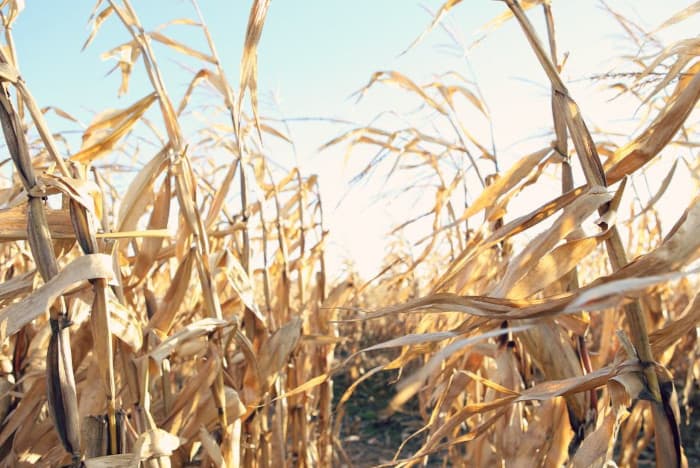
Soybean Food Plot
Soybeans are more of a spring and summer food source as they don’t hold up well to cold temperatures. This crop offers higher protein levels in the 25-30% range (compared to the 7-10% of corn).
In addition, soybean plots potentially offer a food source for up to 10 months (depending on when they were planted). That 10 months of food production is longer than corn, which produces food for around 6 months on average.
On the downside, soybeans require large plots to be successful, whereas corn can thrive in smaller plots. Also, soybeans grow best in good quality soil with good Ph numbers, so soil testing is almost mandatory with this species of beans. If the soil requires some lime or other treatments to get the Ph in line, that creates additional expenses for the hunter.
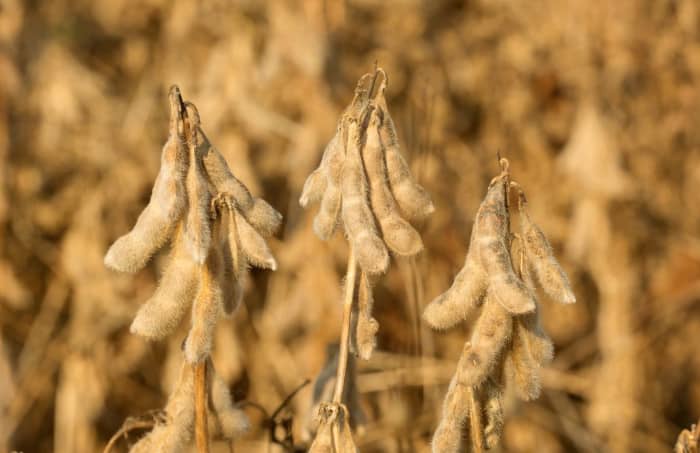
Factors to Consider When Choosing Between the Two Crops
Factors to consider when deciding what to plant for destination food sources include food availability on neighboring properties, cover and stand access, equipment and budget, location, and deer activity throughout the year.
The importance of cover and stand access should be taken into account when selecting food plots for deer. Providing sufficient cover can help attract and hold deer on the property, as it offers a sense of security. Stand access is important for hunters, as it allows for optimal visibility and shooting opportunities.
Additionally, budget and equipment considerations should be evaluated. Planting and maintaining food plots can be costly, so it is essential to determine the available budget and equipment necessary for the chosen plant options. This will ensure that the selected food plots are sustainable and practical for the hunter’s resources.
Consider Focusing on Year-Round Attraction
To ensure a continuous and lasting draw for the whitetail deer, consider focusing on providing a year-round attraction. When considering planting techniques for maximizing yield, it is essential to choose crops that provide both summer forage and late winter food sources.
Assuming that you have the plot space, my auggestion has always been to plant both crops in separate plots. This way, the deer have proven sources of food throughout the year.
However, I could caution against mixing soybeans and corn in the same plot. These two crops do not play well together, so you’ll have far better results planting them in separate plots.
If I only had one plot available and had to choose between the two, I’d go with corn as it offers a better than average food source during the fall and winter months when deer need it the most.

FAQS
Here are some commonly asked questions that are associated with the soybean versus corn food plot debate:
Do deer prefer soybeans or corn?
It’s hard to say as deer have varying preferences depending on factors such as location, availability, and time of year. In general, white-tailed deer have a strong attraction to both soybeans and corn, but their preferences may shift based on what is most accessible and nutritious at a given time.
Are soybeans a preferred food source for deer?
Soybeans are considered a highly palatable and nutritious food source for deer. They are rich in protein and energy, making them an ideal choice for deer looking to pack on pounds.
Are corn fields attractive to deer?
Absolutely! Deer find corn fields quite enticing, especially during the fall and winter seasons when corn is abundant. The availability of corn provides a valuable food source for deer during these times. In addition, standing corn makes good cover while feeding.
Can deer eat both corn and soybeans?
Whitetails can and will consume both corn and soybeans. They have the ability to digest and derive nourishment from both food sources.
When is the best time of year for deer to eat soybeans?
Deer have a preference for consuming soybeans during the early stages of growth when the plants are young and tender. This typically occurs in late spring and early summer.
Will deer eat soybean seed pods?
Whitetail deer are known to feed on soybean seed pods. The protein-rich pods are an attractive food source that deer find quite appealing.
How much soybean do deer typically consume per acre?
The consumption of soybeans by deer can vary depending on factors such as deer density and the availability of other food sources. On average, it is estimated that deer can consume anywhere from 500 to 1,000 pounds of soybeans per acre.
Can deer eat soybean forage?
Bucks and does are known to consume soybean forage. The leafy greens and stems of soybean plants are a valuable source of nutrients for deer.
